Research project in Brazil is helping farmers become more efficient, productive and sustainable
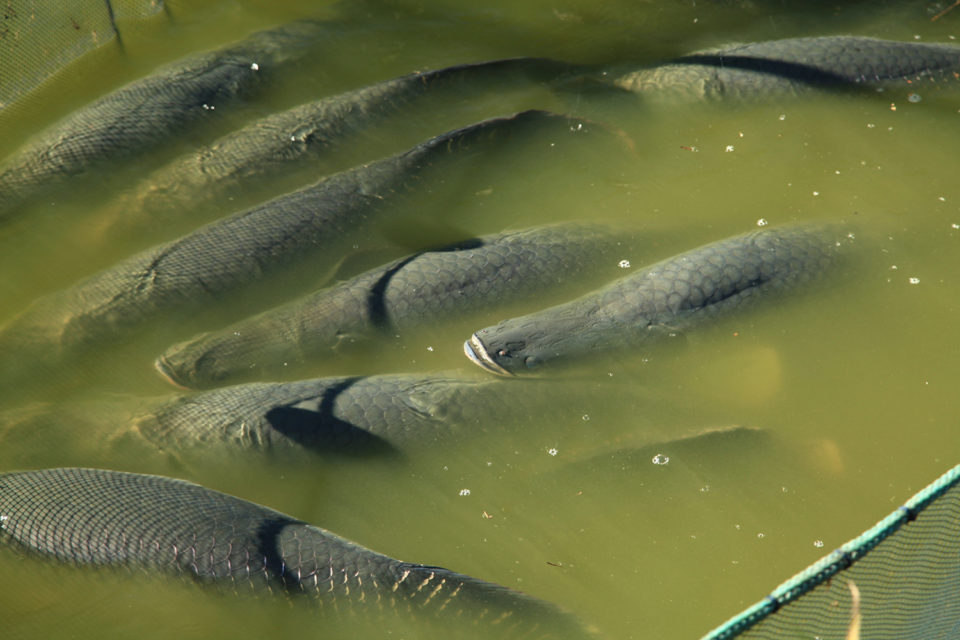
The pirarucu (Arapaima gigas) is an emblematic Amazon fish species and a promising candidate for additional aquaculture development in freshwater, given its high growth rates and strong market demand. However, the industry is still incipient in Brazil with only 4,200 metric tons (MT) produced in 2017.
Over the past five years, the Brazilian Agricultural Research Corporation (EMBRAPA) has mobilized several R&D institutions from Brazil and overseas to work together with key industry players. The project received financial support from the Brazilian Micro and Small Business Support Service (SEBRAE) and the National Council for Scientific and Technological Development (CNPq), and its scope included the main challenges faced by farmers for breeding, managing, growing, feeding, transporting and processing this giant, air-breathing fish. The project tackled not only basic aspects of pirarucu biology but also applied issues to optimize production processes.
This article summarizes these recent findings and envisions how these are impacting the production sector in the short and medium terms.
Novel tools for breeding
Although pirarucu was once considered monogamous for behavioral formation of pairs during the reproductive season, this is not what happens in farms, where a female can copulate with different males at different occasions. Reproduction includes the formation of pairs, which build nests on the bottom in shallow areas for copulation and after external fertilization intensive parental care is provided.
In captivity, farmers try to stimulate reproduction by separating pairs in earthen ponds for reproduction. This is challenging given the lack of decision-making tools for pair separation. By 2012, the project validated a vitellogenin enzyme immune assay (EIA) kit, which was commercialized only for research purposes. This tool allowed establishing breeding pairs and monitoring reproductive events and experiments with broodstock animals at several sites covered by the project in Brazil.
From 2015 to 2018, the project tested and validated a non-invasive endoscopy procedure for gender identification and ovary analysis using modern medical instruments. The procedure was validated and proved useful for monitoring gonadogenesis in female broodstock. Since then, the technique is being used to better understand the ovarian rhythm of the species which, together with studies on the hormonal regulation of reproduction and tests of hormonal induction protocols, aim to develop a protocol for gamete collection in pirarucu.
Tools to increase genetic diversity in breeding farms
Studies of population genomics in wild and captive stocks yielded substantial results to improve the pirarucu productive chain and for the conservation of its genetic resources. Initially, population studies based on mitochondrial DNA supported the conclusion that pirarucu represents a single species, divided into two distinct genetic strains, and may offer new opportunities for understanding the process of domestication and adaptation of both strains in production systems.
From a deep analysis of the genome of pirarucu populations, a panel was developed with hundreds of genetic markers for analyzes of the genetic diversity of breeding relationships and the geographical origin of pirarucu lines. With the generation of genetic profiles of breeders using these genetic markers, it became possible to deliver improvements for broodstock management and to recommend couples without kinship, thus preventing the production of inbred animals. In addition, these markers could be used to identify the genetic origin of aquaculture animals and to identify offspring illegally caught from wild pirarucu, often marketed in aquaculture, and thus contribute to reduce fishing pressure on natural stocks.
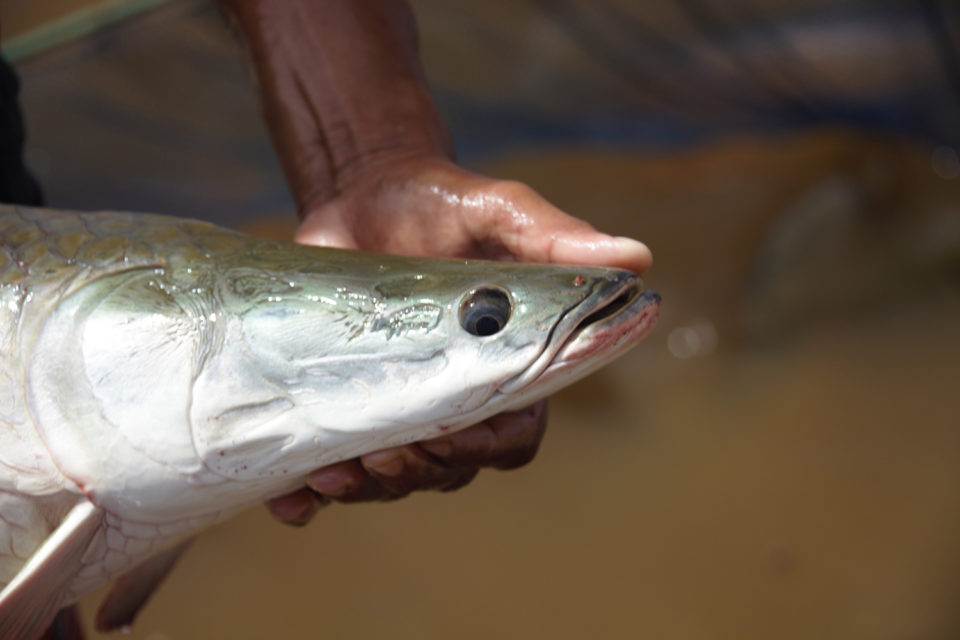
Reducing feed costs at early stages
The project also elucidated aspects of how A. gigas benefits from consuming zooplankton during the rearing phase, even after being conditioned to consume commercial feeds. We found that the preference for some food items changes along animal development, and that cladocerans and insects are predominantly consumed until fish reach 500 grams. At the rearing stage evaluated in a 100-day trial, we showed that fingerlings kept in fertilized ponds gained 20 percent more weight compared to control animals maintained in a non-fertilized pond, demonstrating the importance of pond fertilization for the early stages.
Safe transport of pirarucu
Transportation of A. gigas is a key step in many farming and management situations, and there was a lack of information on the best transportation management practices for the species. Therefore, the project tackled this issue with a study conducted to find the best transporting density in transport containers.
Physiological parameters important for fish welfare were considered, and the study concluded that a maximum density of 160 kg per cubic meter is safe for transporting fish up to six hours. Thus, the response of juvenile pirarucu to high transportation densities may be less severe than it is with other fish species. Nevertheless, it is recommended that the fish are not immediately subjected to an additional stressing factor, considering that 96 hours after handling for transportation, the physiological parameters of the test had not fully returned to the basal values.
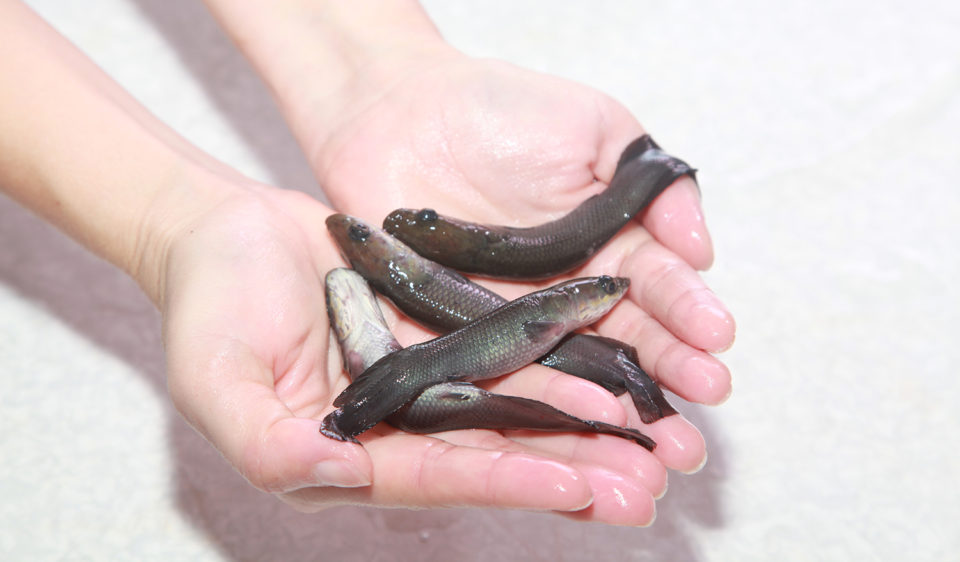
Improving nutrition
The lack of appropriate rations to meet the nutritional requirements at the various stages of production is a critical limitation for the productive chain of A. gigas. A study evaluating the digestibility of protein ingredients concluded that corn gluten meal, poultry byproduct meal and soybean meal may be potential protein sources in feed formulations for the species.
The estimated essential amino acids requirements of pirarucu (based on muscle tissue amino acids profile) were close to those of other carnivorous fish species and can be used provisionally to formulate feeds until dose-response assays are carried out. These data allowed the analysis of the amino acid profile of some commercial feeds applied through the pirarucu production cycle and showed that most of the sampled feeds were deficient in lysine. Some of them also exhibited tryptophan and methionine deficiencies.
The evaluation of the Pirarucu mouth aperture determined an ideal pellet size range of 15 to 20 mm for use during the grow-out phase, from 7 to 10 kg. This information should increase feeding efficiency, because in Brazil the maximum size of commercial feed pellets for fish currently ranges from 10 to 14 mm.
The next step will be to experimentally apply all of these data in a specific feed formulation for the growout phase, and to evaluate its economic and productive performance on a commercial scale when compared to commercial formulations currently available.

Improved knowledge of Arapaima parasites
In the last years, the project yielded scientific information on one of the main etiological agents of diseases of A. gigas– focusing on the fish fingerlings – the helminth Dawestrema cycloancistrium (Monogenea: Dactylogyridae), for which diverse treatment methods were evaluated.
For effective integrated management of parasitic diseases in fish productive systems, knowledge on parasite life cycles, their influence on environmental parameters and the potential of host impairment is essential. Based on these premises, we characterized specific aspects of the life cycle of D. cycloancistrium, focusing not only on the adult parasites on the gills, but on their other stages of development, such as eggs and oncomiracidia (active free-swimming larvae), evaluating the influence of temperature on the life cycle and quantifying the potential for disease dissemination by determining oviposition rates.
We found that in earthen ponds, intensity peaks of Dawestremasp. in fingerlings occur between 7 and 10 weeks of rearing, and that infestation by this helminth has a negative correlation with infestation by trichodinids protozoa. In concurrent studies, treatment methods were evaluated using a chemotherapeutic drug already adopted empirically by the producers and also two phytotherapics (natural products containing substances of secondary vegetal metabolism): Allium sativumand Mentha piperita.
The results of these studies and the additional questions generated are the basis for continuing research aimed at increasing information on the life cycle of the pathogens of A. gigas, as well as the development of new methods of disease prevention and treatment.
A different fish for processing
The pirarucu has desirable characteristics for its inclusion in the industrial processing lines: excellent zootechnical performance, high meat yield, absence of intramuscular spines, good texture and a meat taste and color that is pleasant to most palates. In addition, it is considered an Amazonian regional delicacy that makes it possible to create profitable marketing opportunities for different consumer markets.
There are also some roadblocks to achieving its potential, especially within the processing companies. For example, the slaughter process lacks technical information to determine the best stunning methods to be applied to the fish, as slaughtering-generated stress reduces fillet quality. When it comes to the A. gigas, losses may be significant due to the commercial size and animal weight. Using thermal shock – i.e. simultaneously chilling, sedating and sacrificing the fish – results in prolonged stress with anticipated muscular rigor, which is very detrimental to the integrity and quality of the processed products.
Research studies carried out concurrently and using cerebral percussion (strong blow to the animal skull), developed by a mechanical device applied on the cranial region of the fish, showed immediate loss of consciousness and absence of self-initiated behavior, response to stimuli or clinical reflexes in all animals studied.
Considering the efficiency of stunning and improvements in the fish meat quality, it was demonstrated that the percussion method, when correctly performed, was the most suitable technique for the commercial slaughter of A. gigas. Future studies should be conducted with the aim of developing and validating models of efficient equipment for percussion of pirarucus in a large-scale industrial setting.
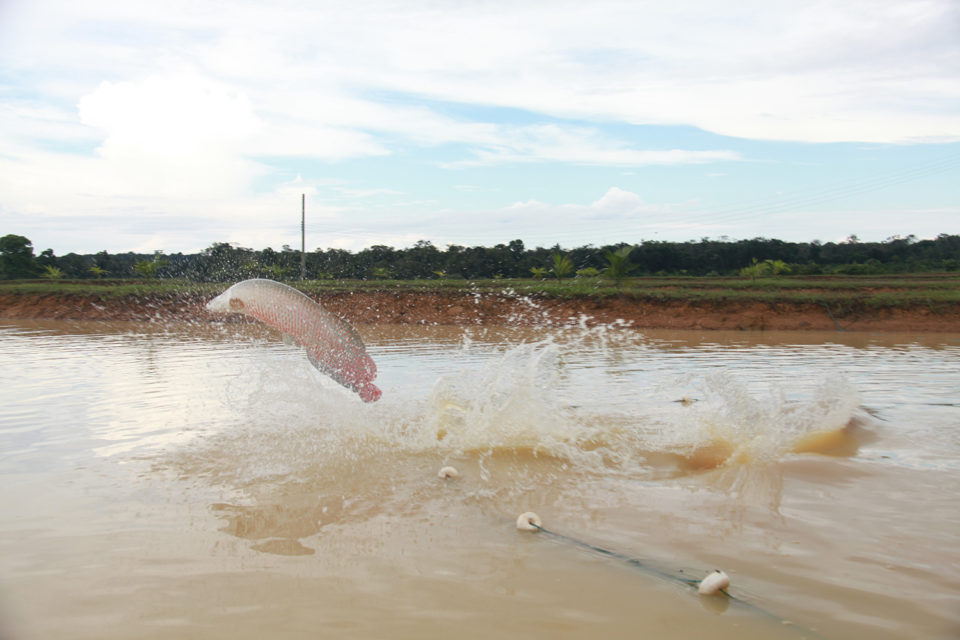
Transferring technologies
In addition to the limited knowledge available to support A. gigas culture, producers and technicians had inadequate access to the limited, available and still empirical knowledge that would could benefit the sustainable production in captivity.
For this reason, three review books were produced and distributed to the main A. gigasproduction centers. One of them compiled the current state of culture production adopted by the productive sector, and the other two collected state of the art information on the reproductive management of broodstock fish, and the rearing and growout of the pirarucu.
Throughout the project, 10 technical training events were conducted and technical knowledge was transferred to 314 participants in the areas of reproduction and production, thus greatly contributing to the professionalization of this value chain in Brazil.
Now that you've reached the end of the article ...
… please consider supporting GSA’s mission to advance responsible seafood practices through education, advocacy and third-party assurances. The Advocate aims to document the evolution of responsible seafood practices and share the expansive knowledge of our vast network of contributors.
By becoming a Global Seafood Alliance member, you’re ensuring that all of the pre-competitive work we do through member benefits, resources and events can continue. Individual membership costs just $50 a year.
Not a GSA member? Join us.
Authors
-
Adriana Ferreira Lima
Corresponding author
Brazilian Agricultural Research Corporation
EMBRAPA Fisheries and Aquaculture
Palmas, Tocantins, Brazil[114,98,46,97,112,97,114,98,109,101,64,97,109,105,108,46,97,110,97,105,114,100,97]
-
Ana Paula Oeda Rodrigues
Brazilian Agricultural Research Corporation
EMBRAPA Fisheries and Aquaculture
Palmas, Tocantins, Brazil -
Eduardo Sousa Varela
Brazilian Agricultural Research Corporation
EMBRAPA Fisheries and Aquaculture
Palmas, Tocantins, Brazil -
Leandro Kanamaru Franco de Lima
Brazilian Agricultural Research Corporation
EMBRAPA Fisheries and Aquaculture
Palmas, Tocantins, Brazil -
Lucas Simon Torati
Brazilian Agricultural Research Corporation
EMBRAPA Fisheries and Aquaculture
Palmas, Tocantins, Brazil -
Patricia Oliveira Maciel
Brazilian Agricultural Research Corporation
EMBRAPA Fisheries and Aquaculture
Palmas, Tocantins, Brazil
Tagged With
Related Posts
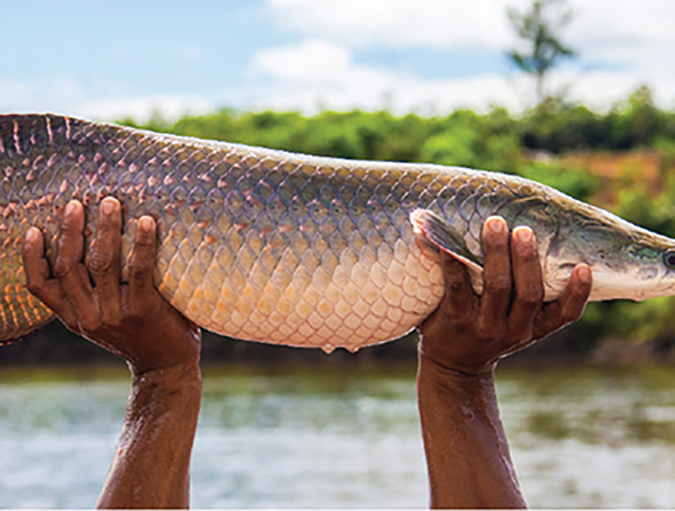
Innovation & Investment
Pirarucu culture in the Brazilian Amazon
With their fast growth and ample light-flavored flesh, pirarucu present great potential. Industry growth is hampered by limited technology and management of domestication practices. Also, current commercial diets are typically not fully suited to the nutritional needs of pirarucu.
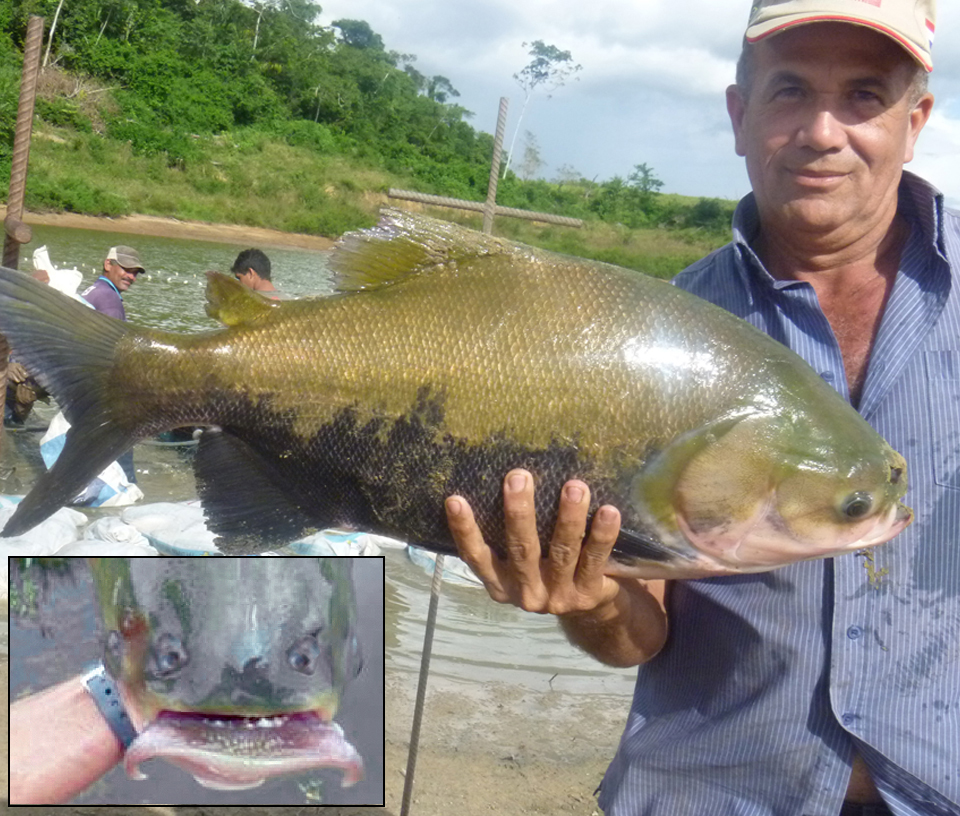
Health & Welfare
Aquaculture of Amazon fish in Latin America
Many fish species that live in the Amazon basin have great potential for aquaculture. The main species currently cultured in the region is tambaqui, a fast-growing, omnivorous fish that tolerates poor water quality.
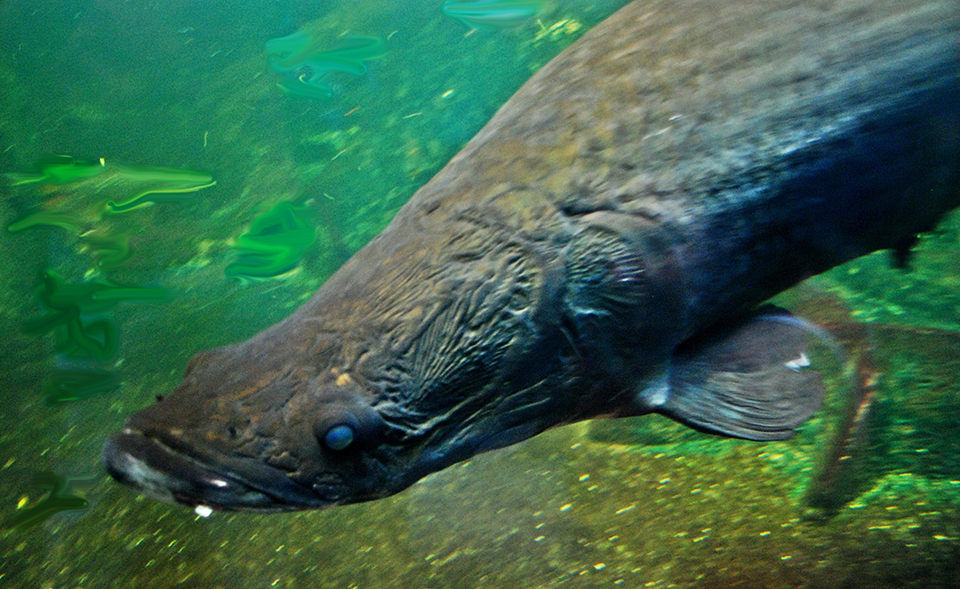
Health & Welfare
Arapaima a candidate for intensive freshwater culture
Arapaima, also known as pirarucu or paiche, offers appealing flesh color and texture, low fat content and high levels of protein and fatty acids.

Health & Welfare
Brazil shrimp farm performs genetic selection for IMNV resistance, growth
The Queiroz Galvão Alimentos shrimp farm and hatchery in Brazil have been working with Concepto Azul to implement a disease-prevention and genetic-breeding program that addresses ongoing impacts from infectious myonecrosis virus (IMNV) and other pathogens.



